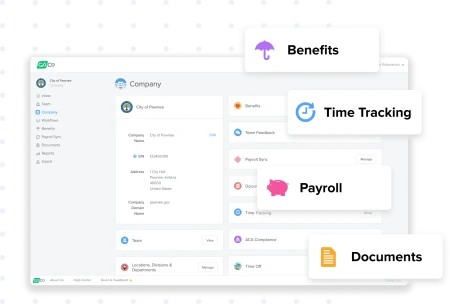Reducing Toxicity in the Workplace: Identifying & Addressing Toxic Employees
Understanding how to recognize the signs of a toxic employee early on
by Nikhil Bendre - November 11th, 2021
As an HR Manager, one of the primary objectives of the job is to create and maintain a positive and supportive work environment in which employees can flourish both professionally and personally. It’s fairly obvious that healthy work environments are better for employee retention, morale, and overall workplace productivity. Unfortunately, this is not always the case. Every now and then, we find ourselves faced with people and situations that can be detrimental to our organizations. Understanding how to recognize the signs of a toxic employee early on, deal with them accordingly, and prevent these kinds of issues from arising in the future is the key to keeping the workplace as light and drama-free as possible.
Recognizing the Traits/Signs of a Toxic Employee
Sabotaging Someone Else’s Work
Some people believe that work is an “eat or be eaten” type of scenario. They may feel that someone else’s failure is necessary to determine their own success. When someone regards the workplace in this way, they throw the whole concept of the “team” out the window. This selfishness can manifest itself in a variety of degrees, ranging from spreading negativity and planting seeds of doubt in the minds of peers to fully sabotaging someone else’s work for personal gain. As soon as you catch wind of this happening, you must address the situation and that employee swiftly and appropriately.
Unwillingness to Take Accountability
As mentioned in the previous point, an employee who refuses to take responsibility for their own actions also throws the concept of the “team” out the window. A major part of being a valuable member of an organization, and honestly, just a good person in general, is being willing to own up to and learn from your mistakes. Someone like this will ultimately drag your team down. Don’t let it get that far.
Being Rude to Colleagues
While a bad attitude may not necessarily or initially be a firing offense, it can quickly lead to a rancid working environment. “Being rude” is a pretty general idea, so this can mean someone who quickly and irrationally becomes irritated, someone who is overly judgmental of their peers, or someone who is just consistently negative and unpleasant to be around. This kind of energy is contagious and will become a cancer to your organization. If you have an employee like this, work with them to resolve this issue. However, note that their attitude may stem from personal issues and this could be an opportunity for you to help an employee in need.
How to Address the Issue
Determining the best course of action when faced with toxicity in the workplace truly varies on a case by case basis. However, there is one measure you can implement that applies to virtually any of these situations. Reporting an issue can be scary for an employee, as they could fear backlash for doing so. Consider implementing an HRIS, like GoCo, that features anonymous workflows for employees to anonymously report any issues that they may see or experience. Now that you’ve been made aware of the problems that have arisen, let’s take a look at how you should deal with the issues that we previously discussed.
Sabotaging other employees is obviously an incredibly serious offense. Not only is it a malicious act towards another team member, but purposefully ruining someone else’s work reflects poorly on the organization itself, as every employee’s contributions directly represent the company. Depending on the severity of the particular situation and, more importantly, the impact of this offense, dealing with this issue can look like a suspension or even cutting that employee loose, as we’re sure that sabotage has no place in any healthy organization's operations or core values.
Being unable to own up to one’s mistakes, while not as severe as the potential impact of sabotage, is still a major issue. An employee who is incapable of taking accountability is likely to continue to fail to do so. The rest of the team will most certainly feel the effects of this, especially if this lack of accountability is accompanied by shifting the blame to someone else. It may take a few instances of this occurring to realize that an employee has this issue, therefore making this a more long-term issue to handle. However, once identified, pull that team member aside and reiterate that mistakes are alright, what truly matters is how those mistakes are handled and dealt with. An employee may deflect responsibility out of fear of consequences. Making sure that employee knows that your organization is a supportive space that encourages learning and growth is a great way to deal with this issue while opening up communication between the employee and upper management. That being said, if you see this happening often, reassess your organization’s actions when someone does make a mistake and make sure they are not irrationally harsh.
As for dealing with a rude employee, we touched on how to deal with them earlier. Most of the time, people’s attitudes are the result of some external factor(s). This is why open and free communication throughout an organization is imperative. The safer and more comfortable your team feels with management, the less likely you are to deal with hostile attitudes in the workplace. Reach out to this employee and make sure that they know you are there for them. They may not even be aware of how nasty they are coming off to those around them. However, unfortunately, some people are just plain rude with no adequate explanation. Handling this delicately and professionally is your best bet at resolving the situation in the most positive and productive way possible. An uncomfortable conversation may be required where you indicate particular unpleasant instances and reinforce that that kind of behavior is absolutely unacceptable at your workplace. In other words, it may be time to humble them and remind them that they are no less and no more important than anyone else on the team.
How to Prevent This in the Future
Be on the Lookout for Red Flags Early On
The earlier you can spot the signs of a toxic employee, the better your chances are of handling the issue with little to no mess. A toxic employee is not all that different from any other toxic person in our lives. If you notice questionable behavior from anyone on your team, don’t just let it slide. It’s important that you nip it in the bud.
Be Vigilant During the Hiring Process
The best remedy is prevention! Have a deep understanding of your organization’s core values and company culture and keep them at the top of your mind while interviewing potential candidates. If someone sticks out to you as a terrible fit for the fantastic team that you have already assembled, trust your gut. The whole point of the hiring process, in addition to making sure someone is qualified, is to make sure that they can make a good impression and mesh with your already established crew. If you have doubts, follow your instincts.
------------------------------------------------------------------------------------------------------------------------------
Fostering a healthy working environment is absolutely crucial to the success and longevity of any organization. By prioritizing this, you’ll observe a happier team and higher quality output. Remember, if you want your team to do great things, you need to provide an atmosphere in which they actually want to work. We hope these points help you out in your efforts to minimize and ultimately eliminate toxicity from your company!

Subscribe to Beyond The Desk to get insights, important dates, and a healthy dose of HR fun straight to your inbox.
Subscribe hereRecommended Posts
HR Trends & Challenges to Prepare For in 2023
Blog Articles
Search...
Product
GoCo
Resources
Articles
eBooks
Webinars
Customer Stories



